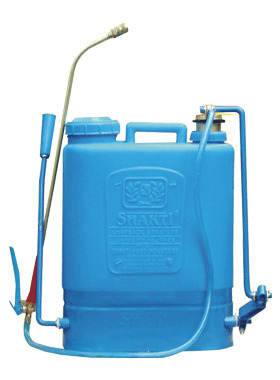

The knapsack sprayer is widely used in various types of applications.Ī lever-operated sprayer consists of a 15 to 20-litre tank, which will stand erect on the ground and when in use fit comfortably on the operator’s back like a knapsack, a hand-operated pump, a pressure chamber and a lance with an on/off tap and one or more nozzles. Carefully observe the patterns you get and judge whether a fine spray or course spray is produced.
#Knapsack sprayer manuals#
For this one needs to consult the manuals of the manufacturer of the specific nozzle.
#Knapsack sprayer code#
Only by knowing the marking code on the nozzle, can one be sure what kind of nozzle it is.2 nozzle types may even look alike but their spray patterns will differ.A variety of nozzles and nozzle sizes are available.Just as one can change the spray pattern on a hose pipe, different nozzles are shaped to produce specific spray patterns.The recommended spray volume is indicated on the chemicals container. The bigger the crop, the higher the spray volume rate in l/ha that must be applied to get good spray coverage. Crop stage and crop density has an influence on the choice of volume rate applied. The sprayed chemical will not reach the target, which will result in a loss of money.Ĭrop stage. Do not spray during the hottest time of the day because the smaller droplets tend to evaporate into the air. Wind can be tolerated to some extent by using nozzles that produce bigger droplets, but spraying is not recommended to spray in wind with speeds of more than 6 km/h.ĭay temperature. Spraying in very windy conditions is not recommended because the wind causes the droplets to drift from the target.

The following weather conditions and external factors will have an influence on the efficiency of spraying: Drift, as a result of wind, must be taken into account because smaller droplets tend to drift more easily than bigger droplets.It is therefore better to spray at a higher working pressure, which produces small droplets, for good overall leaf coverage.The same volume of liquid divided into many small droplets gives better coverage than fewer large droplets of the same volume.When spraying a systemic substance, spray coverage is not so important, but when spraying a contact substance, it is of vital importance to get good spray coverage.The other type of chemical is called a contact substance, which means the chemical only works effectively where it touches the target.The one is a systemic substance, which means that the chemicals are absorbed by the plant when sprayed and then works from the inside of the plant.Two types of chemicals are used in the industry.By using a fan on a sprayer (as used in orchards) droplets can be forced to reach a target.Droplets also tend to drift in strong wind and when they become too small, they will miss the target totally.Droplets tend to become smaller when the pressure is increased.More large droplets are produced at low pressure.Spray nozzles produce a mixture of large and small droplets.Droplets are formed when a water or oil base substance is forced through a narrow opening under pressure.To understand the methodology of chemical spraying one has to look at the principles of the spraying technique. The effective use of pesticides and herbicides is important for good yields in any crop, and could save you money and/or increase yields.


 0 kommentar(er)
0 kommentar(er)
